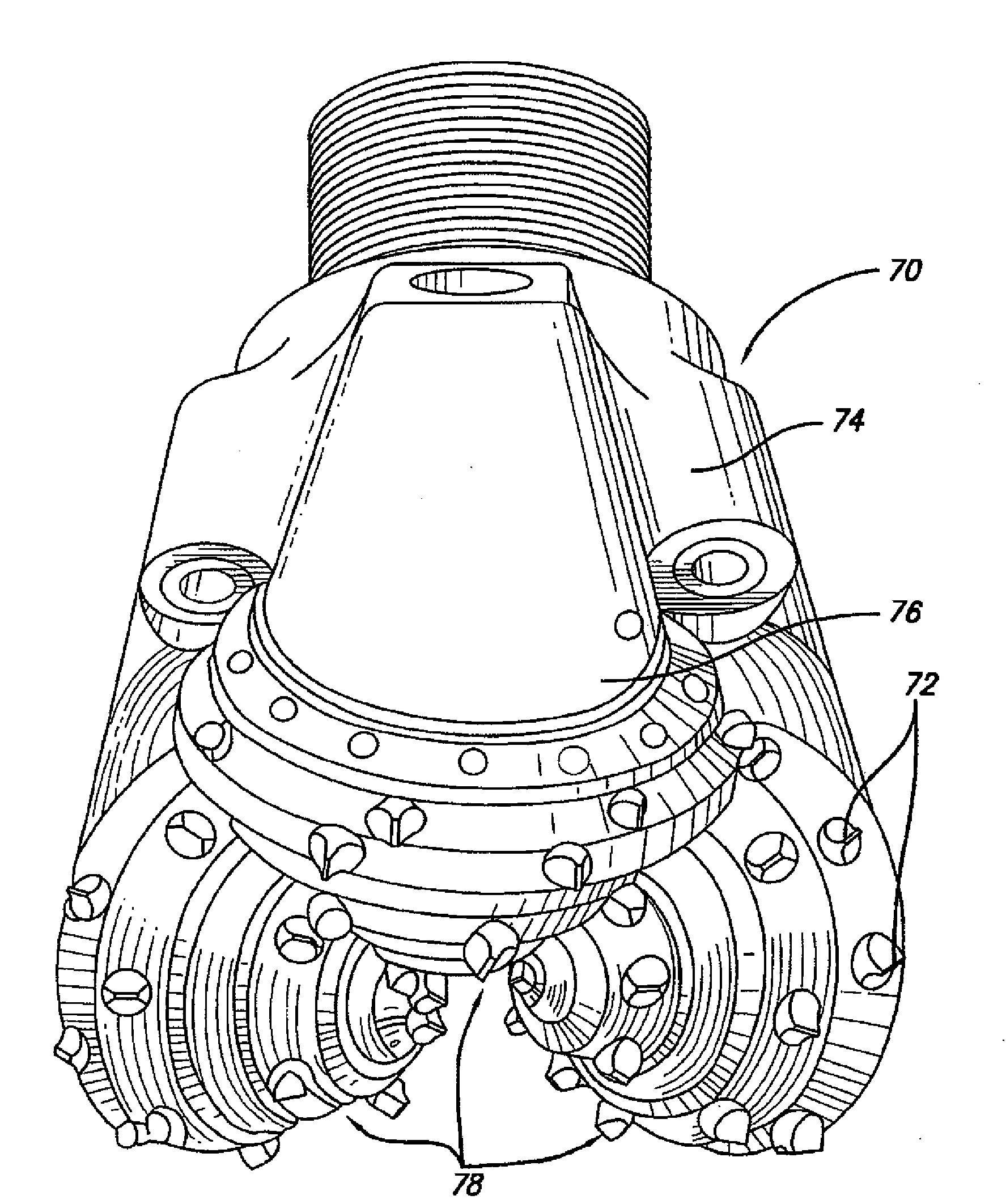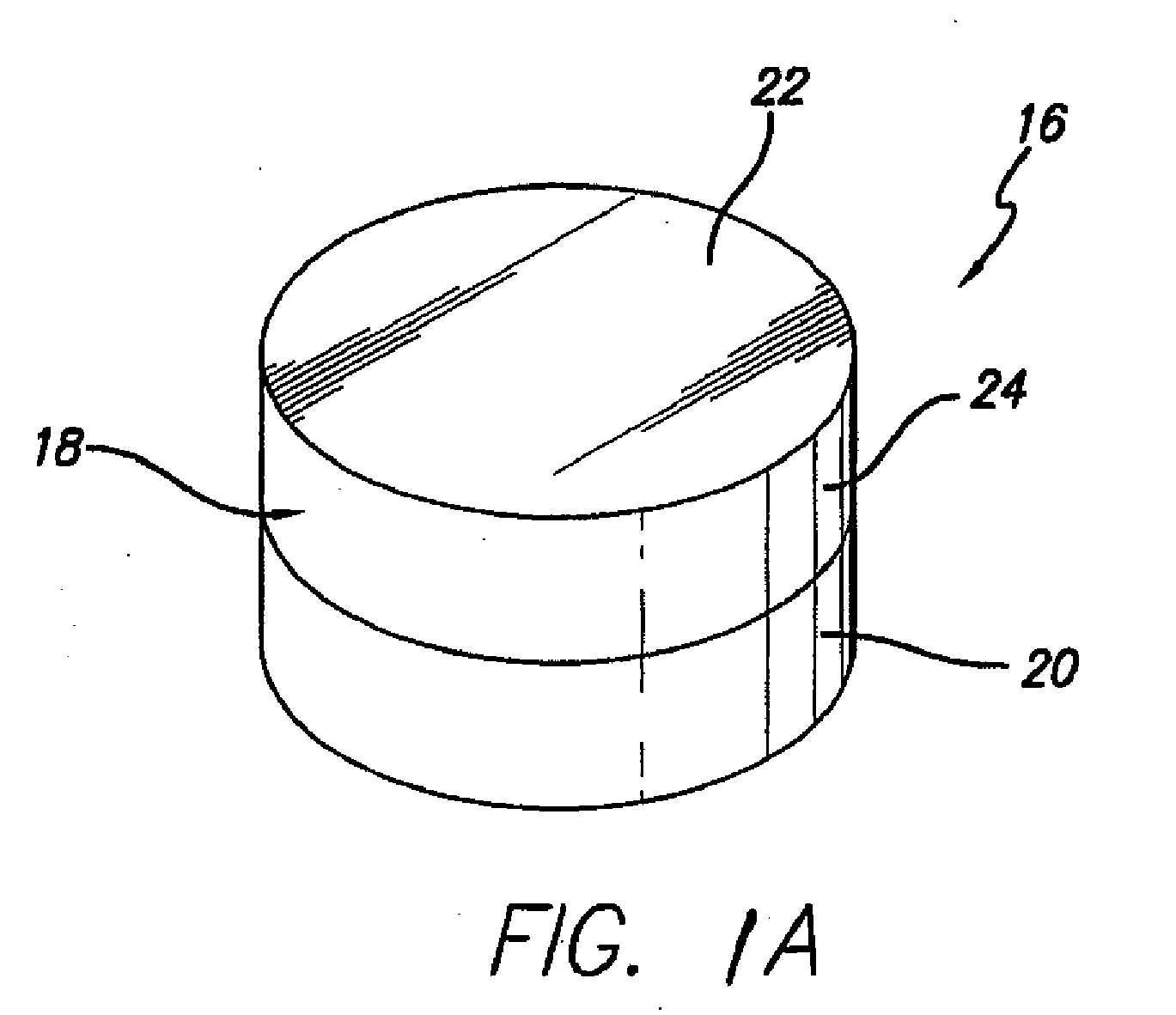Polycrystalline diamond cutting elements having improved thermal resistance
a technology of polycrystalline diamonds and cutting elements, applied in the field of cutting elements, can solve the problems of pcd structure, unsuitable for further use, vulnerability to thermal degradation, etc., and achieve the effect of improving thermal stability and/or thermal resistance, and facilitating construction attachmen
- Summary
- Abstract
- Description
- Claims
- Application Information
AI Technical Summary
Benefits of technology
Problems solved by technology
Method used
Image
Examples
example
Second Example Embodiment PCD Body
[0076]Diamond powder having an average grain size of approximately 0.1 to 4 micrometers is selected and two different samples (Samples A and B) are prepared by coating the powder with different volume percentages of the sintering assist agent. For both samples, the sintering assist agent is applied by electroless plating technique and the diamond powder is prepared in the following manner. First, the diamond powder is degreased in alcohol. The degreased diamond powder is cleaned in flowing water, cleaned in a hydrochloric acid solution of approximately five percent by weight, and then again cleaned in flowing water. The diamond powder thus cleaned is immersed for one minute in a solution including stannous chloride and hydrochloric acid at room temperature as pre-processing, so as to cause absorption of Sn at the surface of the diamond particles (sensitizing). The sensitized diamond powder is washed with water and thereafter immersed for one minute ...
PUM
| Property | Measurement | Unit |
|---|---|---|
| Temperature | aaaaa | aaaaa |
| Fraction | aaaaa | aaaaa |
| Fraction | aaaaa | aaaaa |
Abstract
Description
Claims
Application Information
 Login to View More
Login to View More - R&D
- Intellectual Property
- Life Sciences
- Materials
- Tech Scout
- Unparalleled Data Quality
- Higher Quality Content
- 60% Fewer Hallucinations
Browse by: Latest US Patents, China's latest patents, Technical Efficacy Thesaurus, Application Domain, Technology Topic, Popular Technical Reports.
© 2025 PatSnap. All rights reserved.Legal|Privacy policy|Modern Slavery Act Transparency Statement|Sitemap|About US| Contact US: help@patsnap.com



